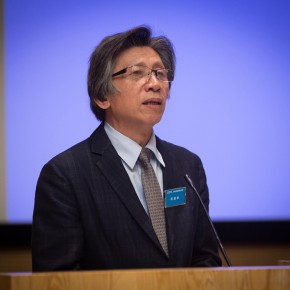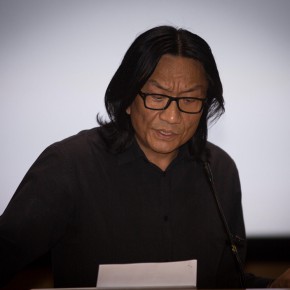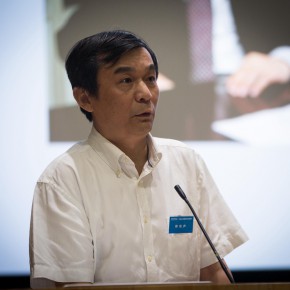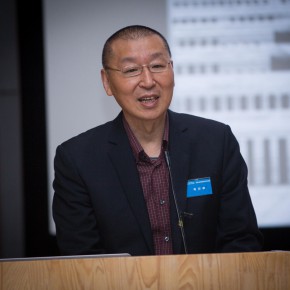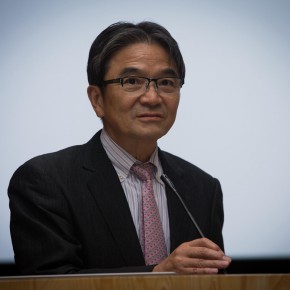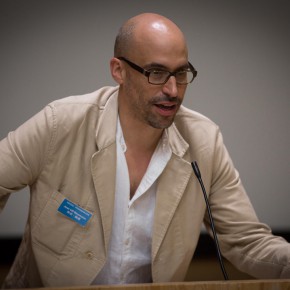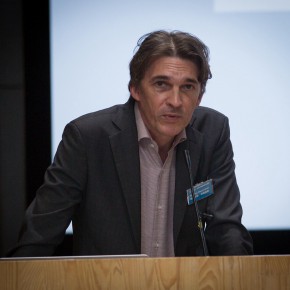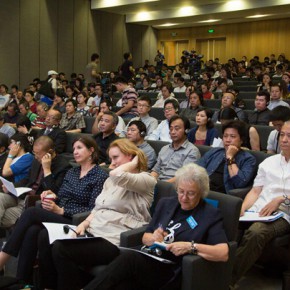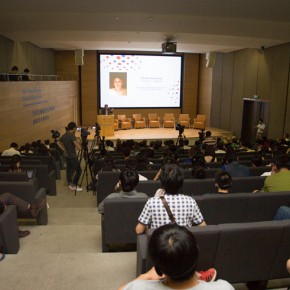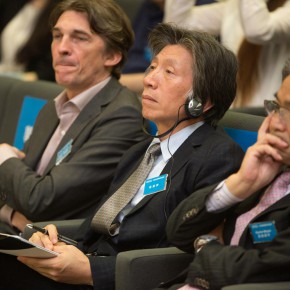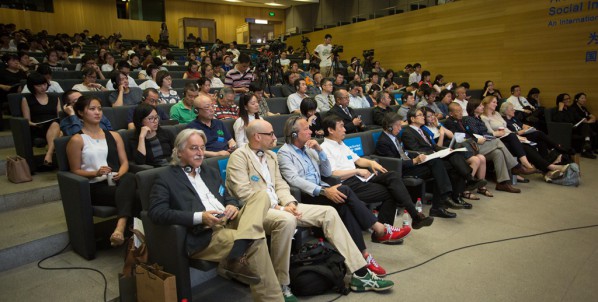
On June 12 and June 13, 2015, jointly organized by the Committee of Art Education at China Artists Association and China Central Academy of Fine Arts (CAFA), “Art Education for Social Innovation” An International Academic Conference was successfully held at CAFA and the Presidents of the International Higher Education Institutions of the Art Forum was as a major part of the events, inviting the presidents of major art institutions at home and abroad to have a discussion and exchange on the topic of innovative art education, sharing their valuable experiences with each other. Prof. Su Xinping, Vice President of CAFA hosted the forum.
Nicolas Bourriaud (Ecole Nationale Supérieure des Beaux-Arts): Art Institutions should not instill teaching, But Teaching is Complex to Stimulate Thinking
Prof. Nicolas Bourriaud, President of Ecole Nationale Supérieure des Beaux-Arts combined the teaching mode of the academy to put forward two problems: What kind of people should the art institutions cultivate? What purpose does art education serve? The Art market is not unlimited in development nor can each student from the art institution become an international artist, only about 5% - 10% of students would be an artist. As educators, we should remember the ratio and think about how to cultivate people in addition to artists in the teaching. Art students would enter every corner of economic society, it was necessary to cultivate the citizens with an artistic thinking ability, which is the important goal of art institutions. Nicholas introduced the teaching mode of Ecole Nationale Supérieure des Beaux-Arts in detail, in terms of academy collections, art centers, experimental doctoral projects, scholarships, academy residency programs, work displays, etc. Nicholas concluded that the art institution was not a place for instilling teaching, but a teaching complex, a place to stimulate thinking.
Wei Ershen (Lu Xun Academy of Fine Arts): Reality and the Suggestion of Chinese Innovative Art Education
Prof. Wei Ershen, President of Lu Xun Academy of Fine Arts gave a speech on three aspects including the understanding of the innovative academy of fine arts, the current existing problems and the reform of the Lu Xun Academy of Fine Arts in recent years. Innovative talents have 4 characteristics: a solid foundation, an excellent cultural quality, an outstanding creative ability and good moral sentiment. In order to cultivate innovative talent, Wei Ershen put forward his suggestions: firstly establish a fair and scientific examination system, to break the emphasis on painting skills; secondly inspire and guide the students’ creative thinking, encouraging beneficial experimental exploration; thirdly transforming the instilling teaching to guiding, the integration of teaching and learning to inspire the initiative; fourthly encouraging the individual, unconventional or unorthodox in the creation, removing standardization, encouraging diversified development; finally speeding up the pace of the updating of teachers’ knowledge, to ensure the high-level academic frontier.
Ryohei Miyata (Tokyo National University of Fine Arts and Music): The Challenges of Tokyo National University of Fine Arts and Music
Tokyo National University of Fine Arts and Music, which has a history of nearly 130 years, is composed of the School of Fine Arts, School of Music and School of Image Art. President Ryohei Miyata introduced the development and strategic task for the Tokyo National University of Fine Arts and Music on 4 aspects including regional contributions, supporting the revival of the disaster area, global development, reform and innovation. Tokyo National University of Fine Arts and Music does not only offer education, but also a place to offer art activities, committed to turn the location into a “world cultural center”. The university actively faced the world, faced internationalization, being active in the international arena, such as building the “Global Art International Educational Course with a Joint Agreement”, together with the University of the Arts London, Ecole Nationale Supérieure des Beaux-Arts, School of the Art Institute of Chicago. At the same time, the university also actively explored the fusion of art and technology, such as the use of 3D technology for the restoration of grotto murals.
Guo Xianlu (Xi’an Academy of Fine Arts): Based on Tradition, Grasping the Pulse of the Times to Build an Unique Education Platform
Guo Xianlu mainly analyzed the features of the development of the Xi’an Academy of Fine Arts from points of advantage and disadvantage. Xi’an Academy of Fine Arts sticks to tradition, taking Chinese sculpture and calligraphy as the compulsory course in order to study Chinese culture. In addition, it grasped the pulse of the times, for example it positively started the construction of the discipline in experimental art and also actively responded to the opportunity brought by the strategic planning of “One Belt and One Road”. Guo also introduced the academy’s exploration in characteristic disciplines, characteristic courses, academic communication, etc.
Bernd Kracke (Hochschulefür Gestaltung): Thinking and Integration of Art and Design Education in the Era of New Technology
Bernd Kracke said Hochschulefür Gestaltung (HfG) were at the university of art that completely inherited the teaching system of Bauhaus University, currently containing only 650 students. It was a college where teachers and students could closely communicate. Bernd Kracke mainly talked about how art education coped with new social changes. On the nonlinear strategy, the integration of art, design, science and technology, degree system, curriculum, international exchange, etc, Bernd Kracke introduced that Hochschulefür Gestaltung (HfG) made a change and adjustment in face of the new period.
Joel Baumann (Kunsthochschule Kassel): Seeing and Artistic Creation in the Environment of the Internet
Joel Baumann quoted the words by a professor of Kunsthochschule Kassel to start the speech, “The first thing that we teach students is to learn seeing”, so it was necessary to identify what the students saw, how to see, now the Internet was undoubtedly the most important way of seeing the world. Started from the annotation of a Google map, he introduced the history and architecture of Kunsthochschule Kassel which has spread to relevant artistic projects and talked about the teachers and students of the school who participated in the interaction of Kassel Documenta.
Fan Di’an: Reorientation – To Meet the Social Innovation
Fan Di’an said there was not only a wall between today’s academy of fine arts and society, mutual reaction and collision of the economic globalizing wave and global culture which helped high art education enter a new context. In the reform movement of the university in China, it was necessary for the academy of art to have a new “reorientation” and actively faces the main problems which social innovation had to solve. CAFA focused on the discussion in 3 aspects: how to establish a new relationship between teaching and learning as regards each other as the main body; the exploration of the teaching model of the integration of curricula and subjects, changing curricula to subjects as much as possible; the important responsibility of the high art education was to reflect cultural responsibility. He advocated that the professors should be based on social reality in the era of Chinese reform, to look for the theme of artistic expression from the abundant local social life, especially paying attention to the use of “Chinese wisdom” and “Chinese experience” to support the creation of contemporary art, and guide students to find the artistic expression of the "Chinese way”.
Text by Zhang Chi, Photo by Yang Yanyuan, Xu Fan/CAFA ART INFO
Translated by Chen Peihua and edited by Sue/CAFA ART INFO


